PLENARY SPEAKERS
Javier Aizpurua
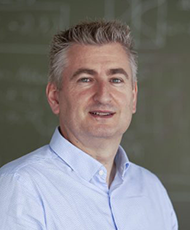
Javier Aizpurua is an Ikerbasque Research Professor at Donostia International Physics center (DIPC) in San Sebastián, Spain, where he leads the “Theory of Nanophotonics Group” (http//cfm.ehu.eus/nanophotonics). Aizpurua has developed theory to understand the interaction of light and nanostructured materials in a variety of field-enhanced spectroscopy and microscopy configurations, such as in SERS, SEIRA, s-SNOM, STM, or STEM. The understanding of the optical response of complex nanosystems has been the main focus of his research, particularly in the field of optical nanoantennas and nanoplasmonics, with special emphasis on the role of quantum effects in nanophotonics.
Malgorzata Baranska
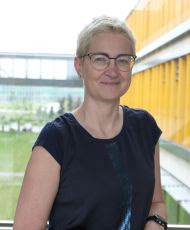
Professor Malgorzata Baranska is a graduate (1992) and doctor of the Jagiellonian University (1999), where she also obtained her habilitation (2007) and the title of full professor (2013). Since 1998, she has been employed at the Faculty of Chemistry of the Jagiellonian University, where she is the Head of Raman Imaging Group and the Head of the Department of Chemical Physics. She also conducts research at the Jagiellonian Centre for Experimental Therapeutics (JCET), in the creation and development of which she has been involved since 2009. Professor Baranska heads one of three research groups there, the Raman Spectroscopy Group.
The current direction of her research is related to lifestyle diseases, their development and methods of treatment, as well as the mechanism of action of drugs. Vibrational spectroscopy, including nonlinear optical techniques of Raman imaging (SRS, CARS), combined with AFM, SNOM, fluorescence microscopy and biochemical tests, are used to track biochemical changes in cells and tissues. Moreover, she studies the optical activity of biologically important compounds using chiraloptic techniques (ROA, ECD), including the mechanism of Raman signal amplification.
Silvia Centeno
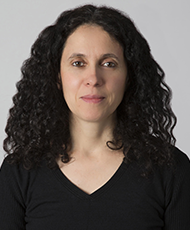
Silvia Centeno is a Research Scientist in the Department of Scientific Research at the Metropolitan Museum of Art in New York where she is responsible for investigating artists’ materials and techniques and deterioration processes in paintings, photographs, and works of art on paper. After receiving a PhD in Chemistry from Universidad Nacional de La Plata, Argentina, she started at the Met as an L.W. Frohlich Fellow to investigate unusual gilding technics in Pre-Columbian metalwork. Since becoming a permanent staff member, she has conducted research in topics including early photographic processes, nineteenth century inks, old master, modern and contemporary paintings. She is a principal investigator in collaborative projects to understand aging and degradation processes in oil paintings and to elucidate nineteenth century photographic processes. Silvia’s recent publications include the characterization of the dynamics of heavy metal soap deterioration in paintings by NMR and other spectroscopic techniques, and studies of paintings by van Eyck, Rembrandt, Vermeer, Van Gogh, Jacques-Louis David, and Modigliani.
Giulio Cerullo
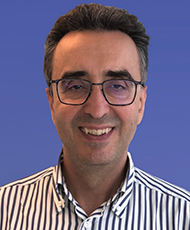
Giulio Cerullo is a Full Professor with the Physics Department, Politecnico di Milano, where he leads the Ultrafast Optical Spectroscopy laboratory. His research activity focuses on the generation of tunable few-optical-cycle light pulses and on their application to the study of primary photoinduced processes in molecules, nanostructures and two-dimensional materials. He has published more than 500 papers which have received over 30000 citations (H-index 86 according to Scopus). He is a Fellow of the Optical Society of America, of the European Physical Society, a member of the Accademia dei Lincei and past Chair of the Quantum Electronics and Optics Division of the European Physical Society. He has been General Chair of the conferences CLEO/Europe 2017, Ultrafast Phenomena 2018 and Program Chair of the International Conference on Raman Spectroscopy 2022. He is the 2023 recipient of the EPS-QEOD Quantum Electronics Prize. He is Editor in Chief of the International Journal of Optics and sits on the editorial board of the journals Science Advances, Laser &Photonics Reviews, Journal of Physical Chemistry, Scientific Reports. He has received an ERC Advanced Grants and has participated to many European Projects, including the supervision of 5 Marie Curie Individual Fellowships. He holds over 10 patents and is the co-founder of two spin-off companies.
Katsumasa Fujita

Prof. Katsumasa Fujita
Professor of Applied Physics at Osaka University. He obtained the BSc, MSc, and Ph.D. in Applied Physics in 1995, 1997, and 2000, respectively, from Osaka University. After a postdoctoral fellowship at Kyoto Prefectural University of Medicine, he joined the faculty at Osaka University in 2002 and was promoted to full professor in 2018. He is engaged in the development of high-resolution and high-speed Raman imaging techniques and Raman-tagged small molecule imaging techniques for analytical elucidation of biological phenomena.
Janina Kneipp

Janina Kneipp studied biology and physics and received her doctorate from Freie Universität Berlin. After postdoctoral research at Erasmus Universiteit Rotterdam, Princeton University and the Federal Institute for Materials Research and Testing (BAM) she was appointed as assistant professor in Analytical Chemistry at Humboldt-Universität zu Berlin in 2008, and as full professor (W3) in Physical Chemistry at HU in 2012. In her research, she uses surface-enhanced Raman scattering to better understand how molecules interact with nanostructures in complex biological samples. She has developed multimodal multiphoton microspectroscopy, specifically surface enhanced hyper Raman scattering to probe molecules and materials, and contributed to elucidating mechanisms in plasmon-driven catalysis and electron harvesting. She received the 2010 Bunsen-Kirchhoff Award of the German Association of Chemists (GDCh), the 2019 Caroline von Humboldt Professorship of HU, and was elected as Fellow of the European Academy of Sciences in 2020. Janina Kneipp serves as editorial co-chair of Analysis & Sensing (ChemistryEurope) and as associate editor of the Journal of Raman Spectroscopy.
James Lambert
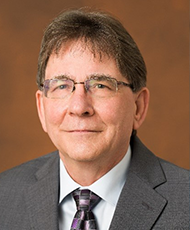
James Lambert is a Senior Engineer in the Instrument Division at the Jet Propulsion Laboratory (JPL) in Pasadena, California. He holds bachelor’s and Master’s degrees in electrical engineering from the University of Pittsburgh and completed his doctorate in Electrical Engineering from Carnegie Mellon, specializing in lasers and optics. Dr. Lambert subsequently completed two years of additional studies in biology and chemistry.
Throughout his tenure at JPL, Dr. Lambert actively contributed to various research projects focused on developing instrument prototypes for planetary exploration using molecular and/or atomic spectroscopy. These instruments have practical applications in in situ geochemical analysis during robotic exploration missions to the Moon, Mars, and Venus, as well as for life-detection on the surfaces of Mars, Europa, and Enceladus.
Dr. Lambert has shared his insights with the scientific community through publications in conference proceedings and peer-reviewed literature. His expertise has further been acknowledged with the award of 15 US patents, underscoring the practical applications of his work in instrumentation for space exploration.
Zhong-Qun Tian
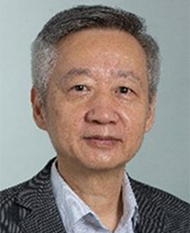
Zhong-Qun Tian received his B.S. in Chemistry from Xiamen University, China in 1982. He went to the Department of Chemistry of University of Southampton, UK with Martin Fleischmann (FRS) to study electrochemical surface-enhanced Raman spectroscopy (SERS) in 1983 and received his Ph.D. in 1987. Then he returned to Xiamen University and has worked there ever since. He was appointed as full professor in 1992 and elected as a Member of the Chinese Academy of Sciences (MCAS) in 2005. He has been a Fellow of the Royal Society of Chemistry (2005), the International Society of Electrochemistry (2010) and the World Academy of Sciences (2014). He was the President of the International Society of Electrochemistry (ISE) in 2019-2020.
His main research interests are surface- (plasmon-) enhanced Raman spectroscopy, spectroelectrochemistry, plasmonics and molecular assembly. He has published 650 peer review papers (over 450 papers on SERS/PERS) with over 48,000 citations with H-index 95. He has received several awards from China, UK, USA, France, Japan, and ISE. He currently is a member of the Advisory Committee of the Chemistry Division of NSF of China, advisory/editorial board for over 15 international journals, including JACS, National Science Rev., Chem. Sci., Chem., Matter, ACS Phys. Chem. Au, and an associate editor for Science in China-Chemistry and Chem. Soc. Rev. He was an associate editor of J. Raman Spectroscopy (2009-2021).
